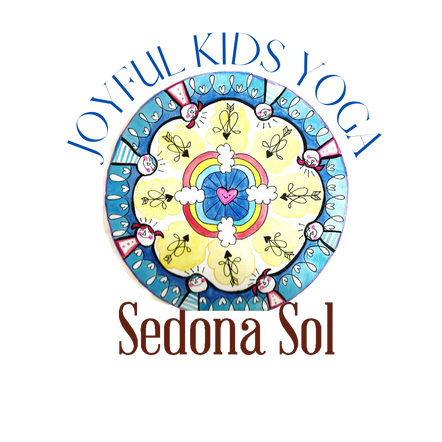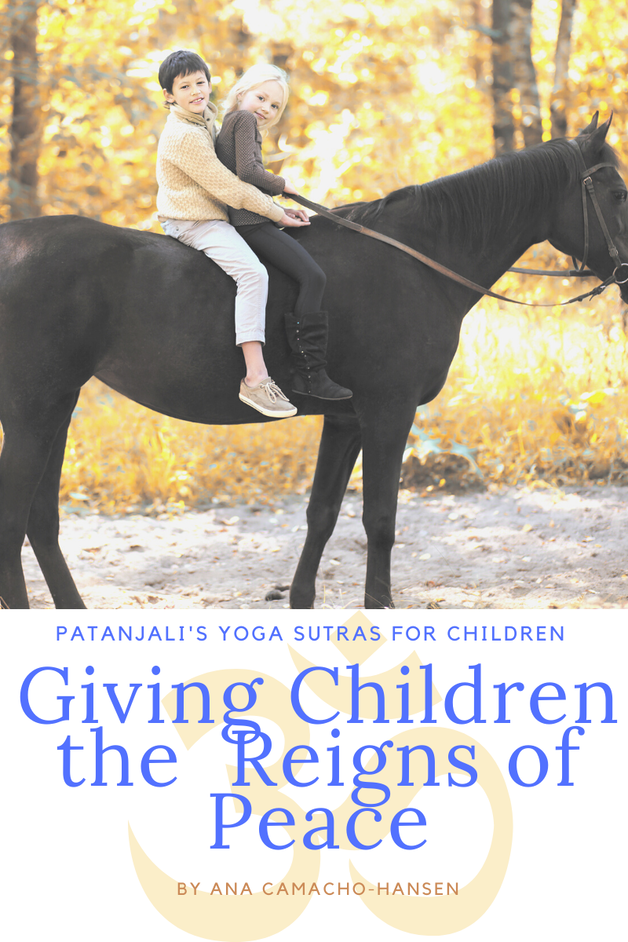|
“Mom, look! I have prana. Do you want me to give you some?” said my 12-year-old boy. He proceeds to place his hand on my heart and closes his eyes to concentrate on his breath. He says that he is transferring his prana to me. I realize that I have done that for him many times throughout the years, especially through the most challenging times during his asthmatic spells or emotional experiences. We have been working on conflict resolution methods from the Yoga Sutras for many years, since before he was born. My teacher, Rama Jyoti, taught me that Patanjali’s Yoga Sutras is a road map of living peacefully in the modern era. It is the ancients’ ultimate gift, and it has been made available to all who seek the knowledge. Why not give children the same wisdom and all its benefits? Are not children today seeking the richness of insight? Of course, they are! I will offer to you why the wisdom of Patanjali’s Yoga Sutras is essential for children. 1. Resilience. Resilience. Resilience. In an era where academic knowledge is easily accessible through search engines, there is very little access to authentic wisdom embodied through everyday behaviors. It is more evident that we are asked to discern what is TRUTH and what is false. Discernment comes from intuition and faith. We can teach children to tune into their intuition and become RESILIENT. First, children must know that they have intuition and inner wisdom. Since 2000, I have been teaching children yoga, and I have seen the need to give children the gift of just recognizing their intuition. In the Yoga Sutras, there is the discussion of the four parts of the mind: Manas (conscious), Buddhi (overmind), Ahamkara (ego), and the Chitta (subconscious). If we can give children the gift of knowing these different aspects of the mind, they can learn to identify their own voice of truth. Resilient children are empowered children that can think and express truths of their own. 2. Tools for Transformation. The Yoga Sutras talk about the kleshas of the reasons for suffering: 1) not seeing the oneness, 2) egoism, 3) attachment, 4) aversion, and 5) fear. These afflictions of the mind are reflected in the breath. Even for adults, this skill of self-reflection is quite complex to master. However, it is worth the effort to train children in self-reflection skills to identify their own kleshas. Through self-reflection skills, as mentioned in the Yoga Sutras, children can become very self-educated in identifying their inner conflicts. Throughout the years of teaching the kleshas to children, I am always so pleasantly surprised how easily children embrace their inner workings. It is like a bright light gets turned on for authentic transformation. For example, when I was in charge of the yoga education and mindfulness program for an entire K-8 school, we received a child in our 7th grade that had been in trouble with the law several times. Our Montessori school was the last resort, and the parents were desperate. When the child entered into our yoga education program, it was evident that self-reflection was very new to this student. The teaching team monitored the child’s behavior, and I made sure that the child participated in the yoga, mindfulness, and peace curriculum, all based on the Sutras. Long story short, we did not have any problems with the child. I built a strong relationship with her, and I believe that it was the yoga and the emergence of self-knowledge that completely transformed her. 3. The Power of Stillness. As my teacher, Rama Jyoti Vernon, taught me, the true nature of yoga occurs when the mind is at a place of quiet and stillness, which is also mentioned clearly in the second sutra. For many of today’s children, the experiences of childhood are far from quiet and peaceful. Children face external factors unimaginable, everything from environmental factors to poverty and homelessness. It is the responsibility of all adults to give children a better childhood. Preserving the beauty and sacredness of childhood for all children in the world is not something to take lightly. Suppose we could start by showing children the value of silence than illustrating our commitment to peace in the world. We can teach children the brilliant chemistry of when to act and not act and be in silence. We can teach children how to access their inner silence through mindfulness and meditation. One of the most powerful gifts we can give to children is the skill of tuning into their silence. For example, my son has told me that he just wants to meditate when he is at recess in school. I have also had many teachers tell me that he meditates during recess. I was pleasantly surprised that he learned to manage his energy by using meditation. Do not get me wrong. My son is like any other child of his generation. As I am writing this article, he is playing Battlefront II on his Xbox. When we teach children wisdom from Patanjali’s Yoga Sutras, we teach them resilience to live an unconditional life. What do I mean by this statement? We are giving children the skills to live a life based on self-empowerment, not based on life conditions. We persevere with the inner strength to not allow our conditions to dictate our moods and behaviors. When we teach children wisdom from Patanjali’s Yoga Sutras, we are giving them tools for transformation. Change is possible, whether if you are five years old or 65 years old. Our journey is our own! Lastly, when we teach children wisdom from the sutras, we teach them the power of peace. The children of the world yearn for peace, and it is possible. We are a world ready for a better way.
0 Comments
Leave a Reply. |
Ana Camacho-HansenThe Sedona Sol Joyful Kids Yoga Blog is sometimes about kids yoga and sometimes about all things yoga. Yes! I love teaching kids yoga and meditation, but sometimes I like to write about peace and my friends. Ana Camacho-Hansen is the author of Yoga For Big Hearts & Little Hands: A Handbook of Yoga Poses for Children. For more information, click here. Enjoy! ArchivesCategories |


 RSS Feed
RSS Feed